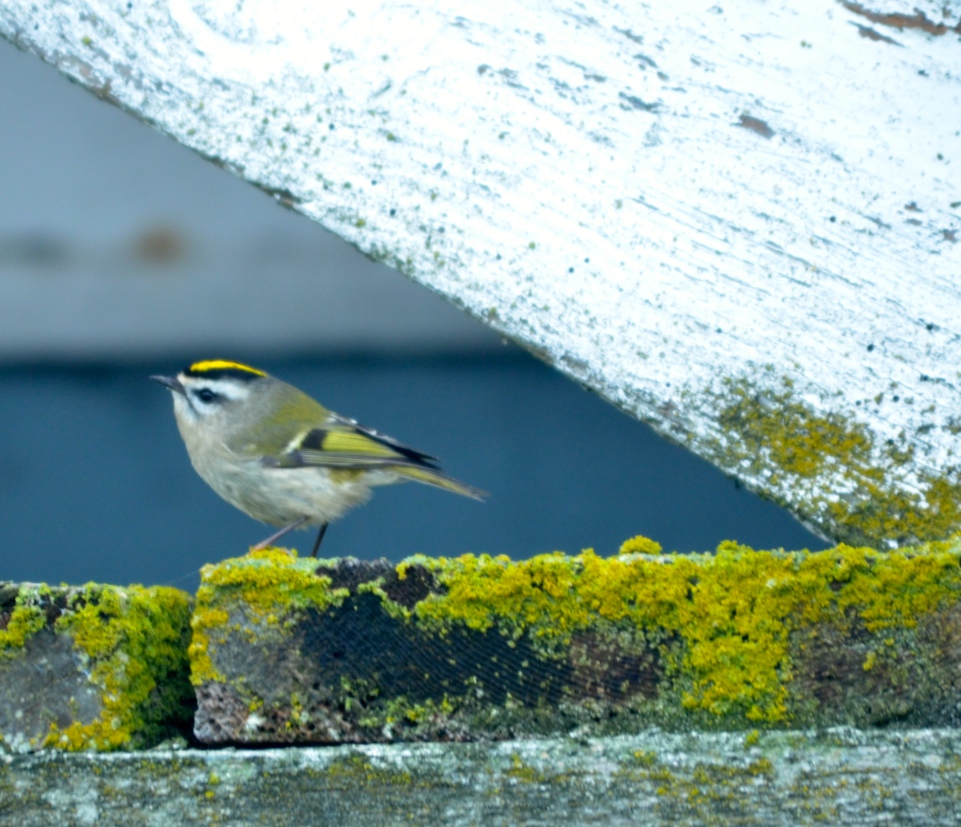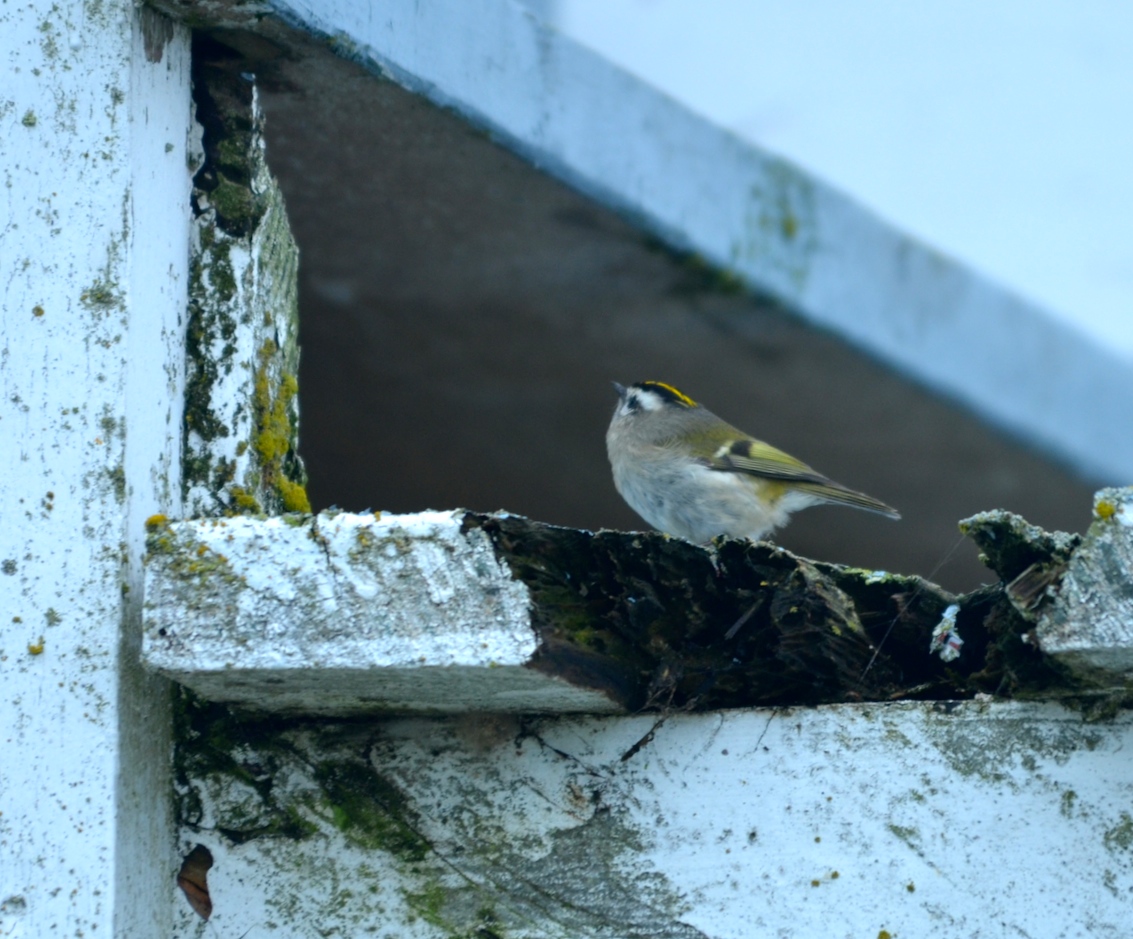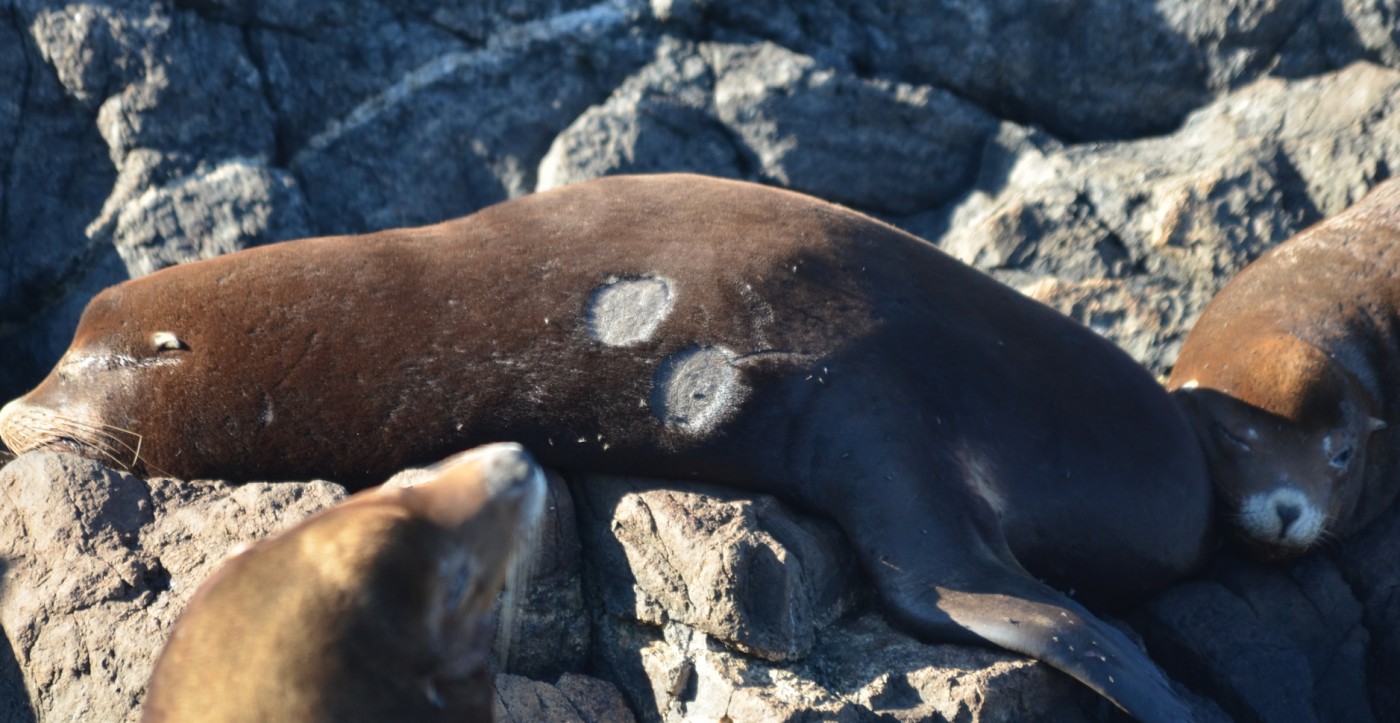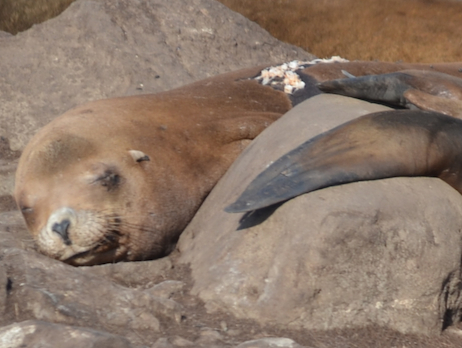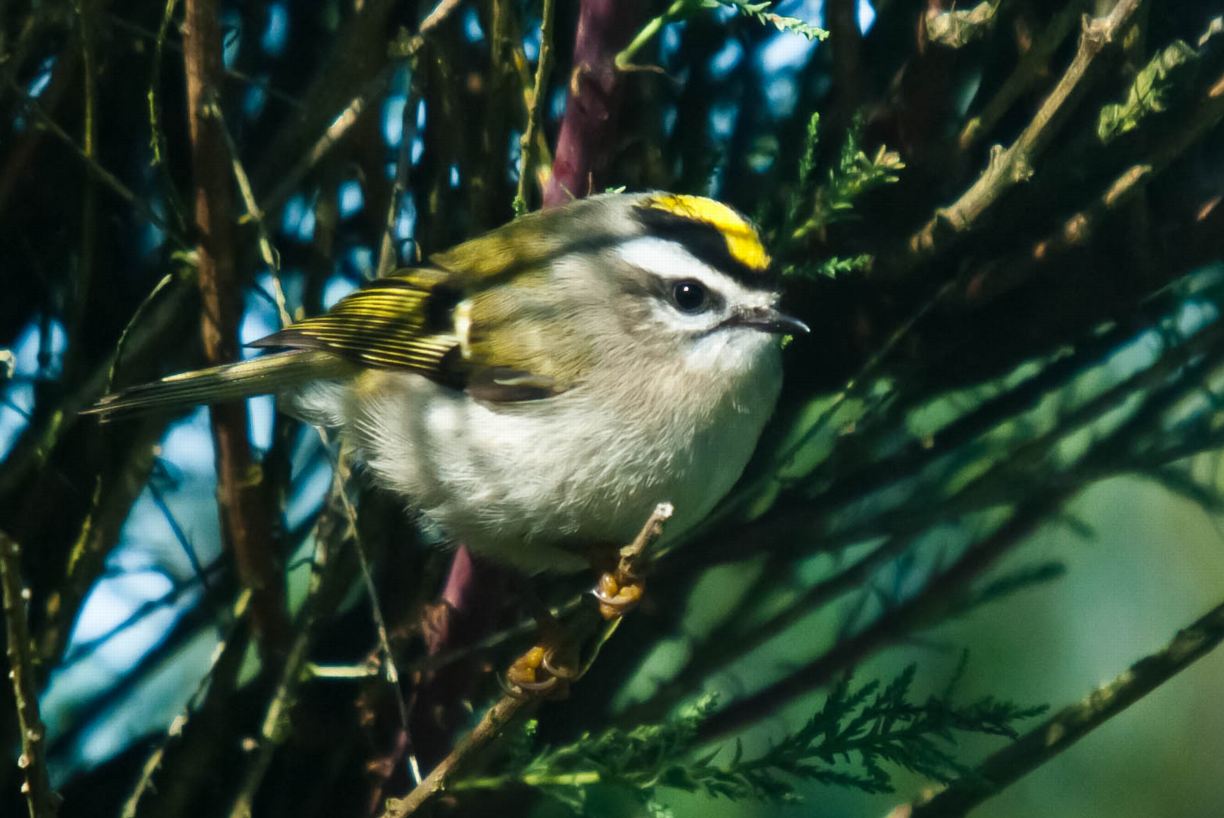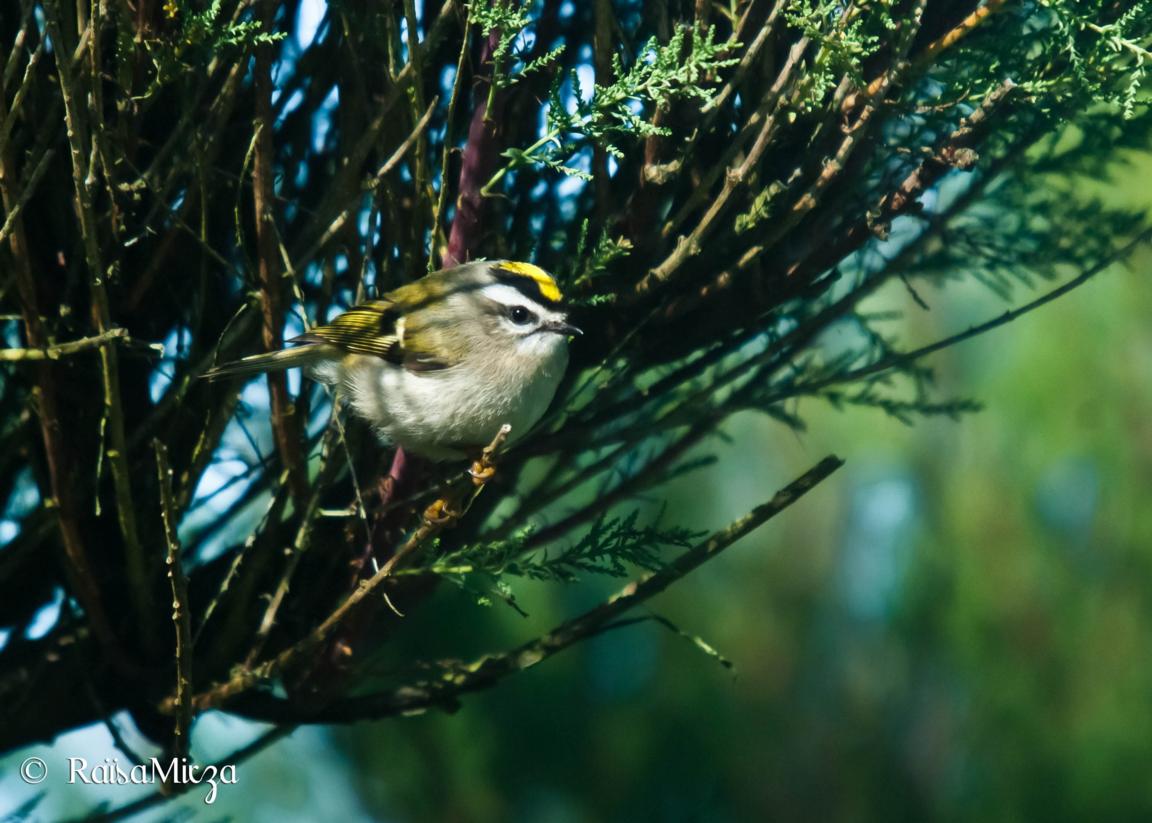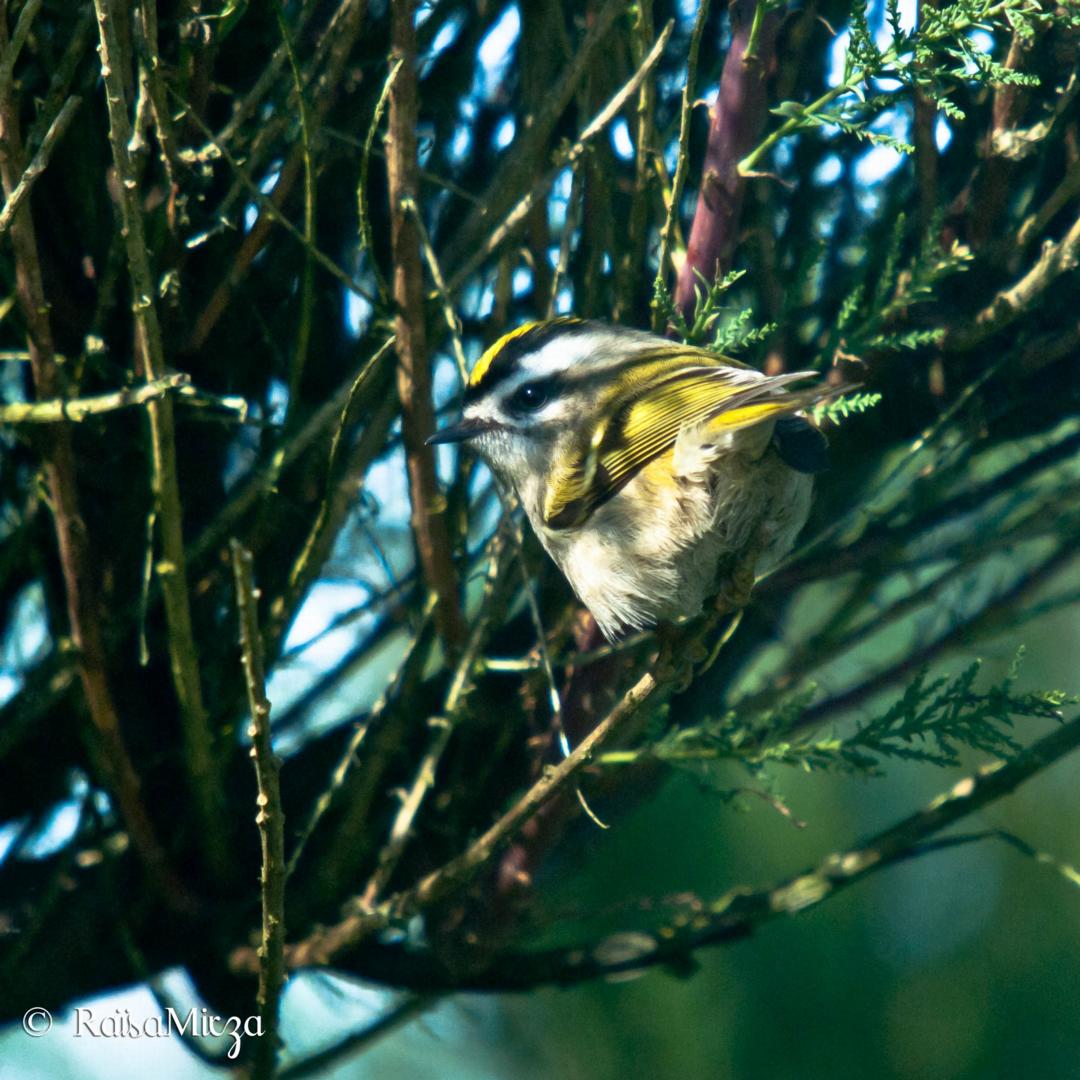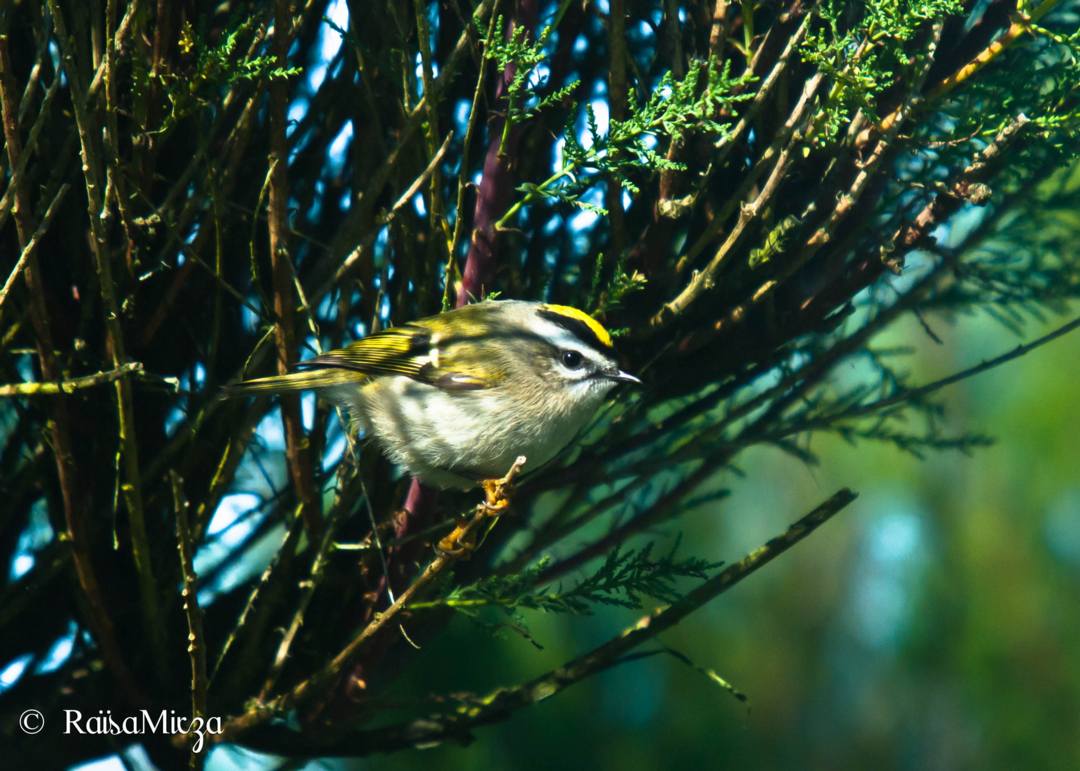Fog was the defining feature of today’s weather. Although visibility was up to 5 nautical miles first thing, it quickly socked in and other than a few momentary lifts and a brief clearing at dusk, the foghorn has been going steadily. Light levels were low and although it was not raining, it was very damp. The barometer started falling just after midnight last night and is still falling. There is a strong wind warning in effect for tomorrow with forecasted south winds of 15 to 25 knots in the morning. Clouds and precipitation are also part of the package.
It was difficult to see vessels in reserve today unless they passed right by the jetty and even then they were sometimes hard to spot. I heard several boats that I could probably correctly identify from their engine sounds but did not record any of those. Four whale watching vessels were noted in reserve.
No whales were sighted today due to the low visibility but I had a little visitor who was busy eating insects off the outside of the house, a Golden-crowned Kinglet. It was alternating hiding in the woodpile and catching serious numbers of insects on the house. It is a great little flyer, and able to almost hover as it picks up the bugs. A more likely place to find Golden-Crown Kinglets is high in conifers.
The animal census was put off due to the lack of visibility but my guess is that the California Sea Lion count will be high this week. They are starting to fill in between the boathouse and the shoreline west of the cairns. They are definitely damaging the cairns. One of the Californians there today had a fresh, still quite bright, red Cookie Cutter Shark scar. Many of the California Sea Lions have Cookie Cutter Shark scars. Some have quite a few while they are less common on the Stellers Sea Lions and I have not seen them on the Northern Elephant Seals.
If you didn’t know, the Cookie Cutter Shark is not very big but has this amazing feeding technique not unlike a hole saw, but much more organic. It clamps on with its lips, bites down and then spins its body around. These little dervishes will take circular plugs out of larger animals including whales, resulting in perfectly circular scars a few inches across. They have even been observed taking a chunk out of a Great White Shark. Weird but true they can also feed like regular sharks on smaller prey and they are very common. They are a vertical migrator found up to 3 kilometers down and come up to the surface at dusk, descending again at dawn.
Speaking of weird but true predation stories, a weird thing associated with the California Sea Lions is that they seem to puke up their fish bones and otoliths. The evidence is everywhere, including on each other. On that charming note, I will sign off.
- Out of its usual habitat, high in conifers, this little Golden-crown Kinglet is loading up on insects on the outside of the eco-guardians house.
- There are plenty of insects on these rotting stairs to feed one little kinglet for a long time.
- These perfectly circular scars are from Cookie Cutter Sharks.
- Warning gross content. If you look closely you will see salmon bones all over the back of the sleeping California Sea Lion in the background. Guess where that came from?
Chores were routine. There were no visitors.
